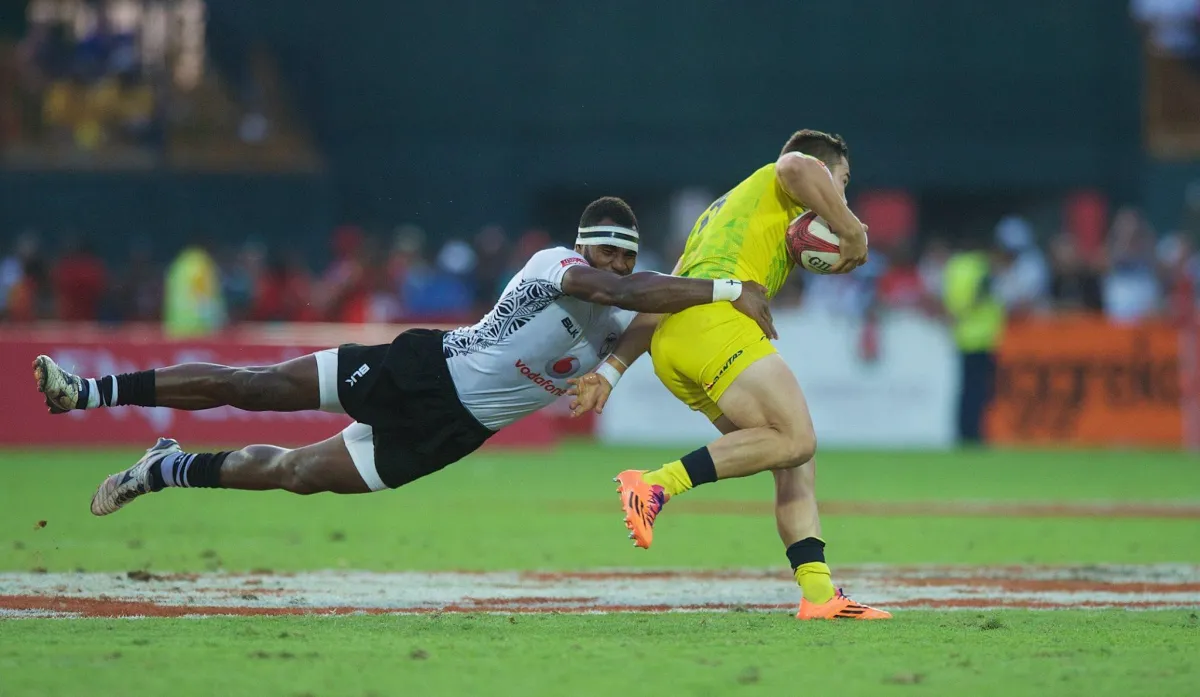News Updates

Defense Transition Adaptability
The Art of Transition Adaptability
In the fast-paced world of Rugby 7s, the difference between a winning team and a struggling one often comes down to how well they adapt during defensive transitions. The ability to quickly shift from defense to attack, and vice versa, can create crucial scoring opportunities and prevent game-changing line breaks. In this words of wisdom, we will dive into the key principles of defensive transition adaptability and how players can master this essential aspect of the game.
What is Defensive Transition Adaptability?
Defensive transition adaptability refers to a team's ability to quickly adjust its strategy and structure when transitioning from defense to attack or from one phase of defense to another. In Rugby 7s, with fewer players on the field, every transition is critical. Whether it's capitalizing on a turnover, reorganizing after a missed tackle, or adjusting to a sudden change in the opponent's attack, defensive adaptability is vital for maintaining control and dictating the pace of the game.
Key Elements of Rugby 7s Defensive Transition
1. Maintaining Line Integrity
The foundation of any effective defense is a well-formed defensive line. In Rugby 7s, players must be able to spread out quickly, maintain line integrity, and move up together to pressure the attackers. A broken defensive line leaves gaps for the opposition to exploit, making it crucial for players to stay connected and organized. During transitions, defenders should be aware of where their teammates are positioned, closing down space and ensuring there are no easy routes for the attackers.
Tip: Focus on keeping a straight line across the field, moving up in unison, and communicating to ensure everyone maintains their position. If a player is drawn out of line to make a tackle, others must react quickly to fill the gap and prevent an overlap.
2. Working in Threes: Chop Tackle, Jackal, and Support
Effective defense in Rugby 7s often relies on the coordinated efforts of small groups working in threes. The first player (chop tackler) goes low to bring down the ball carrier, the second player (jackal) contests for the ball on the ground, and the third player provides essential support by securing the ball or setting up the next phase. This teamwork is crucial for forcing turnovers and enabling swift crowd transitions.
When a team can consistently execute this strategy, it creates multiple opportunities for counterattacks, while also limiting the opposition's ability to recycle possession. The trio must act decisively and communicate effectively to dominate the tackle area.
Tip: Practice working in threes during training drills, emphasizing quick support play, accurate chop tackles, and effective ball contesting to refine this turnover technique.
3. Swift Crowd Transition: Flooding the Tackle Area
Once the ball is turned over, a swift crowd transition is essential to secure possession and shift momentum. This involves overloading the tackle area with support players immediately after a turnover. By overwhelming the opposition at the breakdown, the team can win quick ball and initiate a fast attack before the defense has time to regroup.
In this scenario, players must quickly adapt from a defensive mindset to an attacking one, with the primary goal of exploiting the disorganized defense. The chop tackler, jackal, and supporting players must work seamlessly together to not only win the ball but also ensure a smooth transition into an offensive setup.
Tip: As soon as a turnover is secured, support players should position themselves to receive quick passes and create attacking options. The more players involved in the transition, the greater the chances of catching the defense off guard.
4. Effective Communication: The Glue Holding It All Together
Communication is often the deciding factor in a team's ability to adapt during defensive transitions. Players need to constantly communicate, not just during set pieces, but throughout open play to ensure everyone understands their role and adjusts to changes in the game. This becomes even more important when shifting quickly from defense to attack or covering a line break.
During a defensive transition, verbal and non-verbal communication keeps the defensive line connected, guides players into the right positions, and alerts teammates of any threats. Clear and concise instructions can be the difference between a well-executed turnover and a missed opportunity.
Tip: Make communication a habit during all phases of play. Encourage teammates to call out when they are going for a tackle, when they need support, or when they see gaps forming.
Training for Defensive Transition Adaptability
Training to improve defensive transition adaptability should involve:
Scenario-based Drills: Simulate turnovers and rapid changes in play during training to practice quick adjustments. Include drills that require players to shift from defense to attack and vice versa within seconds.
Team Defense Exercises: Focus on maintaining line integrity, working in groups of three, and effective communication. The drills should involve game-like situations that test the team's ability to respond under pressure.
Fitness and Agility Work: Since Rugby 7s is a high-tempo game, players must be fit enough to maintain high intensity throughout defensive transitions. Agility training can help players move quickly and change direction to cover gaps.
Visualization: Before training sessions, encourage players to visualize different defensive scenarios, imagining how they would react to turnovers or sudden shifts in play. This mental rehearsal can improve their ability to anticipate and adapt quickly during actual games.
Conclusion
Defensive transition adaptability is the hallmark of a well-coached Rugby 7s team. It combines the principles of line integrity, crowding the tackle area, teamwork in threes, and effective communication to create a defense that is not only solid but also capable of launching devastating counterattacks. By focusing on these elements in training and executing them on the field, aspiring Rugby 7s athletes can elevate their game and turn defense into a potent weapon.
© Copyright 2023 Stonewriters. All Rights Reserved.
While We Appreciate Our Friends At Google and Facebook (now Meta) For Connecting Us With You, That Is The Extent Of Our Affiliation. Google is a copyright of Google and Facebook/Meta is a copyright of Facebook/Meta and you landing here, in no way, implies that either Google or Facebook/Meta endorses anything on this page, so we all agree to indemnify them from any liability. Should You Require Assistance With Any of Our Products or Services, Our World-Class Support Team Is Always Here For You:
Need More Assistance?
© Copyright 2023 Stonewriters. All Rights Reserved.
While We Appreciate Our Friends At Google and Facebook (now Meta) For Connecting Us With You, That Is The Extent Of Our Affiliation. Google is a copyright of Google and Facebook/Meta is a copyright of Facebook/Meta and you landing here, in no way, implies that either Google or Facebook/Meta endorses anything on this page, so we all agree to indemnify them from any liability. Should You Require Assistance With Any of Our Products or Services, Our World-Class Support Team Is Always Here For You:
Need More Assistance?










